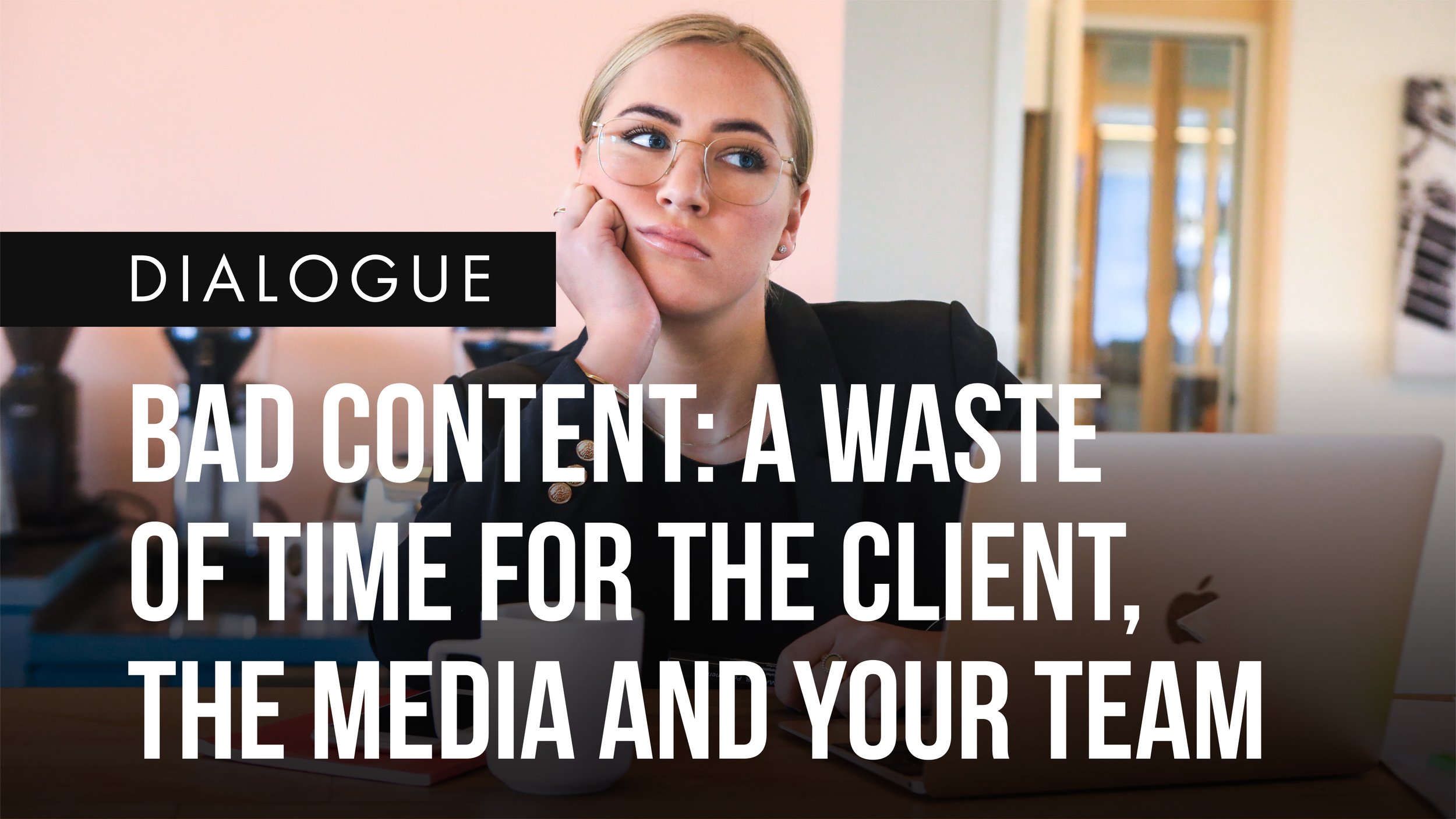By Jimena Larrea
In the field of content creation, there is nothing more daunting than having a blank screen in front of you, a list of key messages from your client and nothing relevant to say.
As the bridge between the brand and the journalists, it is our job to communicate what's important for the client, but can we do this without sharing bland and repetitive information that will never see the light of day? Yes. We definitely can.
First: Make it useful
Just because there aren't any important announcements in the near future, it doesn’t mean we can’t share relevant insights of current events from the company's spokesperson or even a list of useful and creative tips regarding a product or service.
The media is always thinking about their audiences and whether they might find their articles interesting and useful. As information providers, we need to do the same and put ourselves in the shoes of their readers.
And yes, these contents might not bring hundreds of publications (unless your client shares with you a groundbreaking piece of information), but with the right strategy they can place the company’s name in top tier media outlets who, in the future, might consider the brand as a key source of data.
Secondly: Make it easy to publish (and read!)
It is no secret that people are less inclined to read an article with huge paragraphs, no subheaders and no images. In fact, according to the How People Read Online Report, by Nielsen Norman Group, internet users primarily scan the text to process information and search for specific data.
Why not help the journalists by making the content more appealing? This can be achieved by adding headings and subheadings, placing important information upfront, using simple words, including bulleted lists and experimenting with different formats like columns, listicles, infographics or how-to-guides.
We also need to understand what each media actually needs. If a lifestyle website rejects your opinion piece on the 2022 Pantone, why not offer them an exclusive listicle with interesting facts about the Very Peri Pantone presence in movies? It doesn’t hurt to try.
Finally: Make it “organic”
Organic is one of those terms that have infiltrated the media, marketing and PR teams vocabulary. But what does “organic” really mean? The answer depends on the client and it can turn into a never ending debate with questions such as: “how many times should the company name appear?” or “can we add a link to our website?”
In my experience, most media outlets will not publish any kind of content without editing or adjustments, and they will most likely remove the brand (not entirely but will leave it at one mention at best), eliminate any links and even add some competitors.
It is our job (and not an easy one) to make the brand’s presence subtle enough so the journalist will feel more comfortable when using the information. If the brand wants a larger presence, full control of the content and a link to their website, they will most likely have to pay for it.
At the end of the day, we must remember that journalists receive hundreds of emails and proposals everyday and only those with the most relevant and interesting information and pitches will make it out of their very VERY crowded inboxes.
Creating content without a specific purpose, audience or reason in mind, will not only be a waste of time for the team, but also for the client and the journalist who dared to open the document and scan what we had to offer.

